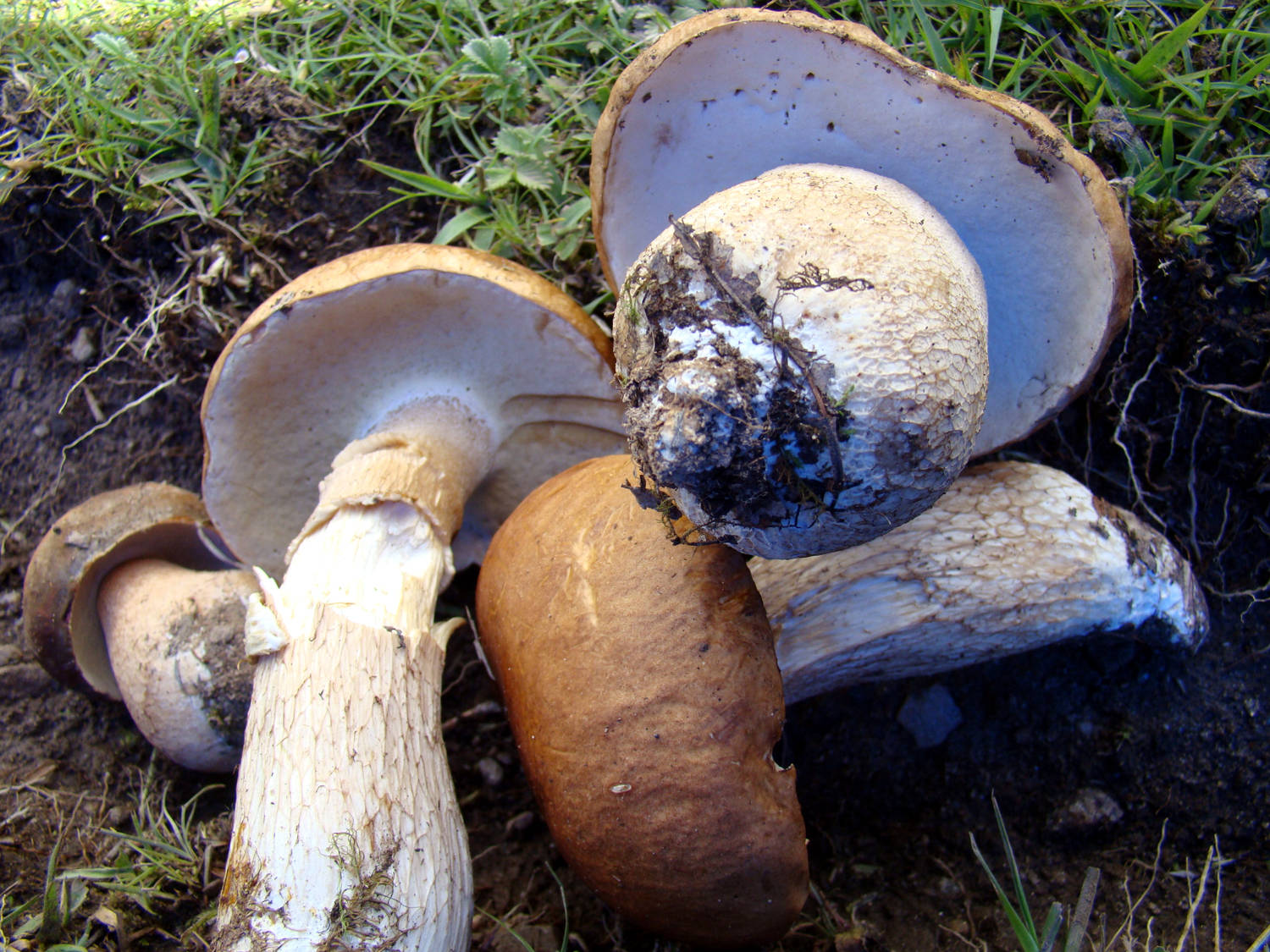
Local name: Phap Shamong
Edibility: Edible
Habitat: Terrestrial and solitary to scattered and sometimes gregarious.
Description: Cap: 5–25 cm, slightly sticky to touch, convex when young and flattens with age. The colour is generally reddish-brown fading to white in areas near the margin, and continues to darken as it matures, dull when dry and smooth with dented at some parts of the cap. Stem: 10–15 cm tall and up to 5 cm thick, it is club-shaped, or bulges out in the middle. It is finely reticulate on the upper portion, but smooth or irregularly ridged on the lower part. Hymenophore: The under surface of the cap is made of thin tubes, they are up to 2 cm deep and 4 tubes/mm, and whitish in colour when young, but mature to a lemon-yellow. The angular pores, which do not stain when bruised. Flesh: White, thick and firm when young, but becomes somewhat spongy with age. When bruised or cut, it either does not change colour or turns a very light brown. Spore Print: Olive brown.
Comment: Boletus edulisis considered one of the safest wild mushrooms to pick for the table as there are no poisonous species that closely resemble it. The most similar mushroom may be the Devil's bolete (Boletus satanas) which has a similar shape, but has a red stem and stains blue on bruising.


